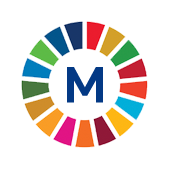 5.6.2 Extent to which country has laws and regulations that guarantee full and equal access to women and men aged 15 years and older to sexual and reproductive health care, information and educationMetadataPeriod: AnnualYear: 2025 |
 5.6.2 Extent to which country has laws and regulations that guarantee full and equal access to women and men aged 15 years and older to sexual and reproductive health care, information and educationMetadataPeriod: AnnualYear: 2025 |
| METADATA |
| Indicator information |
| Definition and methodology |
| Data source type and data collection method |
| Notes |
| ID of global indicator |
| Metadata update |
| Global metadata |
| Indicator information | Top |
| Indicator | |
5.6.2 Extent to which country has laws and regulations that guarantee full and equal access to women and men aged 15 years and older to sexual and reproductive health care, information and education | |
| Global indicator name | |
5.6.2 Number of countries with laws and regulations that guarantee full and equal access to women and men aged 15 years and older to sexual and reproductive health care, information and education | |
| Target | |
5.6 Ensure universal access to sexual and reproductive health and reproductive rights as agreed in accordance with the Programme of Action of the International Conference on Population and Development and the Beijing Platform for Action and the outcome documents of their review conferences | |
| Goal | |
Goal 5. Achieve gender equality and empower all women and girls | |
| Definition and methodology | Top |
| Definition | |
The indicator refers to the extent to which a country has laws and regulations that guarantee women and men aged 15 and over, full and equal access to medical services, information and education. The indicator is expressed as a percentage on a scale from 0 to 100 (there are national laws and regulations that guarantee full and equal access) and indicates the status of the country and progress in the existence of such national laws and regulations. The indicator only measures the existence of laws and regulations but does not measure their application. | |
| Methodological explanations | |
The Inquiry is sent to the Permanent Missions by UN Population Division (DESA) to facilitate data collection from national governments. | |
| Method of calculation | |
The indicator measures specific legal enablers and barriers for 13 components across four sections. The calculation of the indicator requires data for all 13 components. The 13 components are placed on the same scale, with 0% being the lowest value and 100% being the most optimal value. Each component is calculated independently and weighted equally. | |
| Unit of measure | |
% | |
| Available disaggregation | |
Type of health care/service/education | |
| Territorial level | |
Republic of Serbia | |
| Data source type and data collection method | Top |
| Data source | |
United Nations | |
| Periodicity of data collection | |
Annual | |
| Notes | Top |
| ID of global indicator | Top |
C050602 | |
| Metadata update | Top |
| 2/6/2025 | |
| Global metadata | Top |
https://unstats.un.org/sdgs/metadata/files/Metadata-05-06-02.pdf | |